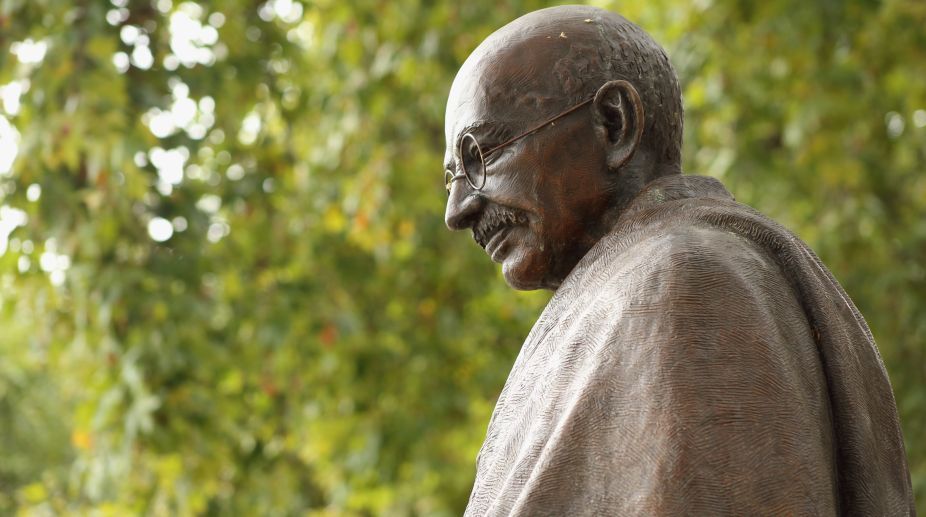What, then, should be the real strategy for maintaining and continuing the spirit of goodness? Gandhi has a very clear and distinct answer: “As long as you derive inner health and comfort from anything, you should keep it. If you were to give it up in a mood of self-sacrifice or out of a stern sense of duty, you should continue to want it back, and that unsatisfied want would make trouble for you. Only give up a thing when you want some other condition so much that the thing no longer has any attraction for you, or when it seems to interfere with that which is more greatly desired.” (Visva-Bharati Quarterly, New Series II, Part II, P. 46.)
Significantly, Gandhi allows a flexible but appropriate window of efflorescence in goodness which is always enviable and worthy of emulation. Dedicated and devoted to the spirit of goodness, Gandhi regards non-violence as ‘wholly good’.
Advertisement
When this spirit of goodness is revealed in the theory and practice of non-violence, it yields dividends. In fact, non-violence as a potent force of goodness is the surest way towards excellence and the ascent of man.
“Just as one must learn the art”, Gandhi famously observed, “of killing in the training for violence, so one must learn the art of dying in the training of nonviolence. Violence does not mean emancipation from fear, but discovering the means of combating the curse of fear. Non-violence, on the other hand, has no cause for fear.
The votary of non-violence has to cultivate the capacity for sacrifice of the highest type in order to be free from fear. He reeks not if he should lose his land, his wealth, his life. He who has not overcome all fear cannot practise ahimsa to perfection. The votary of ahimsa has only one fear that is of God. He who seeks refuge in God ought to have a glimpse of what sheds the love of the perishable body.
Training in non-violence reveals the Atman that transcends the body; and the moment one has a glimpse of the imperishable Atman one is thus diametrically opposite to training in violence. Violence is occasionally needed for protection. Non-violence is needed for the protection of the Atman, for the protection of one’s honour. (Harijan, 1 September, 1940).
Goodness as an exponent of Truth and vice versa is more often than not misinterpreted. This is very much experienced in terms of human relationships. In our day-today world, we slip from the inner essence of goodness primarily because it fails to uphold Truth in the light of self improvement and self-abnegation.
In goodness there is no room for undesirable and inane conflict. Now is the time or never to think, rethink and revaluate our concept of goodness from the distinct viewpoints of Gandhi ~ “If I am true to myself, if I am true to mankind, if I am true to humanity, I must understand all the faults that human flesh is heir to. I must understand the weaknesses of my opponents, their vices, and yet in spite of them, not hate but love them.
I have not hesitated to call the system of the government under which we are labouring ‘satanic’, and I withdraw naught out of it. But I know that I shall not deal with it, if I begin to devise means of punishing the evil-doer. My business is to love them and my patient and gentle handling to convert them.” (DG Tendulkar: Mahatma, Vol. II, p. 200)
Elsewhere, as an unfailing promoter of goodness in ahimsa, Gandhi emphasises the fact that goodness incorporates fearlessness and categorically remarks: “If I am a follower of ahimsa, I must love my enemy. I must apply the same rules to the wrongdoer who is my enemy or a stranger to me, as I would to my wrong-doing father or son.
This active ahimsa necessarily includes truth and fearlessness. As man cannot deceive the loved one, he does not fear or frighten him or her. Gift of life is the greatest of all gifts; a man who gives it in reality, disarms all hostility. He has paved the way for an honourable understanding. And none who is himself subject to fear can bestow that gift. He must therefore be himself fearless. A man cannot practise ahimsa and be a coward at the same time.” (Speeches and Writings of Mahatma Gandhi, GA Natesan & Co. 1935, p. 346.)
A quest for goodness is an untiring quest for Truth. Gandhi has idealised this spirit of goodness in terms of Truth throughout his life. As a mystic seeker after goodness marked by Truth and love for all irrespective of caste, creed, community, colour, sex and locality he adroitly unfolds an unparalleled vision of self-excellence ~ “A seeker after Truth, a follower of the law of Love, cannot hold anything against tomorrow.
God never stores for the morrow. He never creates more than what is strictly needed for the moment. If, therefore, we repose faith in His providence, we should be rest assured that He will give us everyday our daily bread, meaning everything we require. Perfect fulfilment of the ideal of non-possession requires that man should, like the birds, have no roof over his head, no clothing or stock of food for the morrow. He will indeed need his daily bread, but it will be God’s business, and not his, to provide for it.” (From Yeravda Mandir, Navajivan Press, 1935, p. 34).
Indeed, goodness in the genuine sense of the term calls for ‘reducing oneself to a cipher’. Gandhi, the loinclothed fakir has proved it in serene contemplation and marvellous action. Reining in terror is a forbidding challenge in modern times.
With the spirit of goodness as Gandhi inspires, one can negotiate all conflicts and constraints with joy and togetherness, freedom of thought and expression and tolerance. He emphasises the fact that in the exercise of goodness two essential components, fearlessness and transcendence in terms of love and Truth, respond to the inner voice of man.
He wrote: “Having flung aside the sword, there is nothing except the cup of love which I can offer to those who oppose me. It is by offering that cup that I expect to draw them close to me. I cannot think of permanent enmity between man and man, and believing as I do in the theory of rebirth, I live in the hope that if not in this birth, in some other birth, I shall be able to hug all humanity in friendly embrace.” (Young India, 2 April, 1931) When will we follow in the footprints of the gentle colossus?
(Concluded)
(The writer is retired Professor of Education, Visva-Bharati University.)











